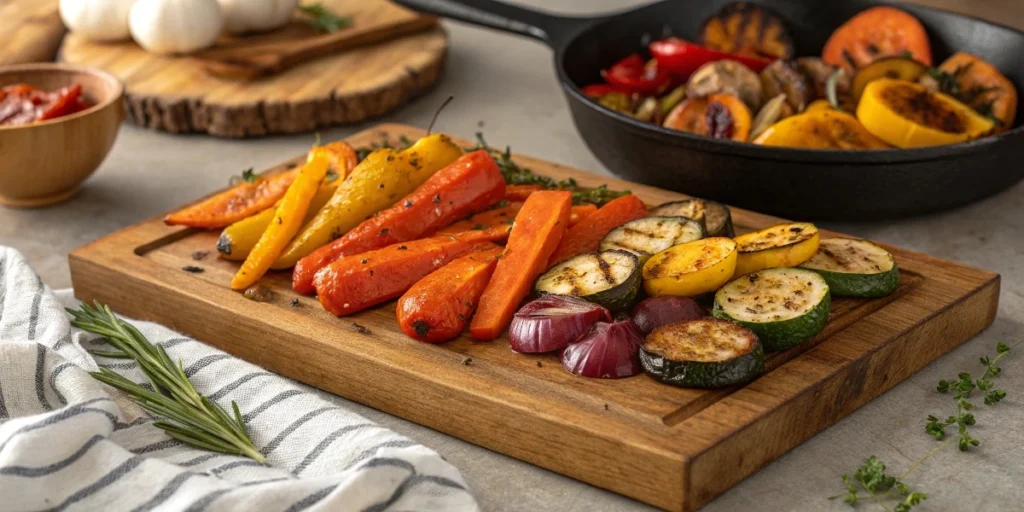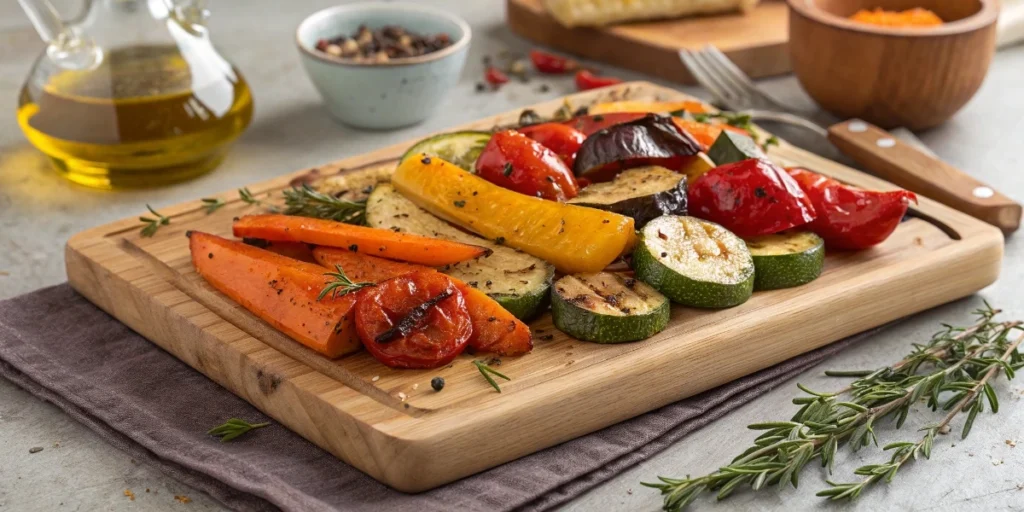What are the best vegetables for roasting and what are the secrets to mastering roasted vegetables?
Roasting vegetables is one of the simplest, healthiest, and most delicious ways to prepare them. This method enhances the natural flavors and sweetness of the veggies, making them an irresistible side dish, snack, or even the main event. Whether you’re a seasoned chef or a beginner in the kitchen, understanding which vegetables are best for roasting and the key secrets to getting them just right can make a world of difference. In this guide, we’ll explore everything you need to know about roasting vegetables, from which ones are best suited for the oven to the techniques that turn ordinary vegetables into extraordinary culinary creations.
Table of Contents
Which Vegetables Are Best for Roasting?
Not all vegetables are created equal when it comes to roasting. While many veggies are versatile enough to roast, some have textures and flavors that lend themselves particularly well to this method. The key is choosing vegetables that can stand up to high heat without losing their flavor, texture, or color.
1. Root Vegetables
Root vegetables are often the star players when it comes to roasting. They have a dense structure that holds up well under heat, and their natural sugars caramelize during roasting, creating a rich, savory-sweet flavor. Some of the best root vegetables for roasting include:
- Carrots: Carrots become tender and slightly sweet when roasted, with their natural sugars intensifying. They also develop a crispy exterior that adds a delightful texture.
- Sweet Potatoes: Sweet potatoes roast beautifully, developing a creamy interior with a slightly caramelized outside. You can cut them into wedges, cubes, or rounds for a versatile dish.
- Beets: Roasted beets become tender and earthy, with a rich, natural sweetness. Their vibrant color also makes them a feast for the eyes.
- Parsnips: Similar to carrots, parsnips become wonderfully tender with a nutty sweetness when roasted. Their delicate flavor pairs well with savory herbs like thyme or rosemary.
2. Squash and Pumpkin
Squashes and pumpkins are incredibly flavorful when roasted. Their firm texture allows them to retain their shape, while their natural sweetness intensifies in the oven. The following varieties are particularly well-suited for roasting:
- Butternut Squash: This squash has a smooth, creamy texture that becomes sweet and caramelized when roasted. Its mild flavor makes it a versatile choice for roasting with a variety of herbs and spices.
- Acorn Squash: Acorn squash is sweet and tender when roasted, and its deep green color and ridged surface make it visually appealing.
- Pumpkin: Roasting pumpkin is an excellent way to bring out its sweetness. It becomes soft and tender, perfect for pairing with savory and sweet seasonings alike.

3. Cruciferous Vegetables for Roasting Vegetables
Cruciferous vegetables like broccoli, cauliflower, and Brussels sprouts may not seem like typical options, but they’re ideal for a crispy, caramelized finish while retaining their nutrients. Some great choices include:
- Brussels Sprouts: Roasting Brussels sprouts brings out their nuttiness and reduces any bitterness. The outer leaves become crispy, while the interior remains tender.
- Cauliflower: Roasting cauliflower gives it a beautiful golden-brown color. The natural flavor deepens and becomes slightly nutty.
- Broccoli: Roasted broccoli is tender yet crispy around the edges, with a rich flavor that can be enhanced by adding garlic or lemon.
4. Alliums: Perfect for Roasting Vegetables
Onions, garlic, and leeks become sweet and tender when roasting vegetables, offering a rich, caramelized flavor that complements other roasted vegetables. These alliums make great additions to your roasted vegetable dishes or can be roasted on their own:
- Onions: When roasting onions, they caramelize, turning soft and sweet with a deep, savory flavor.
- Garlic: Roasting garlic results in a mild, sweet taste that’s less pungent and adds depth to roasted vegetable dishes.
- Leeks: Leeks have a mild, sweet flavor that becomes even more delicate and complex when roasted.
5. Other Vegetables for Roasting
While the vegetables listed above are the go-to choices for roasting vegetables, there are many other vegetables that can also be roasted to perfection:
- Zucchini: Roasting zucchini roasts quickly and becomes soft, with a slightly caramelized edge. Its mild flavor makes it a great side dish or component in a vegetable medley.
- Tomatoes: Roasting tomatoes brings out their sweetness and reduces their acidity. They can be roasted whole, halved, or as part of a mixed vegetable dish.
- Peppers: Sweet bell peppers become tender and slightly smoky when roasted, making them a great addition to any roasted vegetable platter.
What Is the Secret to Roasting Vegetables?

Roasting vegetables might seem simple, but there are several tips and tricks that can elevate your dish from good to great. Below are the key secrets to perfectly roasted vegetables every time:
1. Choose the Right Oven Temperature for Roasting Vegetables
The ideal oven temperature for roasting vegetables is typically between 400°F and 450°F (200°C to 230°C). This high heat ensures that the vegetables get crispy on the outside while remaining tender on the inside. The exact temperature may vary slightly depending on the type of vegetable and its size, but aiming for this range is a safe bet when roasting vegetables.
2. Cut Vegetables to the Right Size for Roasting
To ensure even cooking when roasting vegetables, it’s important to cut them into uniform sizes. Smaller pieces will cook faster, while larger ones will take more time. Generally, cutting vegetables into bite-sized chunks or wedges works best. For vegetables like carrots or potatoes, aim for pieces that are about 1 to 2 inches in size.
3. Toss with Oil and Seasonings for Perfect Roasted Vegetables
To help the vegetables crisp up and enhance their flavor, toss them in a light coating of oil before roasting vegetables. Olive oil is a popular choice, but you can experiment with other oils, such as avocado or coconut oil. Don’t overdo the oil, though—a thin layer is enough. Season generously with salt and pepper, and feel free to add garlic, fresh herbs (like rosemary or thyme), or spices (such as paprika or cumin) to boost the flavor of your roasted vegetables.
4. Use a Sheet Pan with Plenty of Space for Roasting Vegetables
Make sure to spread the vegetables out on the sheet pan in a single layer. Overcrowding the pan will cause the vegetables to steam instead of roast, which can result in soggy, unevenly cooked veggies. If you’re making a large batch, it’s better to use two pans than to crowd them onto one.
5. Flip the Vegetables Midway Through Cooking
To ensure even roasting, flip the vegetables halfway through cooking. This allows both sides to brown and crisp up, giving the vegetables that perfect texture. Depending on the size of your vegetable pieces, this usually takes about 20 to 25 minutes of roasting time.
6. Roast at Different Times for Different Veggies
If roasting a mix of vegetables with different cook times, start with the harder vegetables like carrots and sweet potatoes, then add quicker ones like zucchini or peppers after 10 minutes.
7. Don’t Forget the Finishing Touches
After roasting, consider adding some finishing touches to enhance the flavor of your roasted vegetables. A squeeze of fresh lemon juice, a sprinkle of grated Parmesan, or a drizzle of balsamic vinegar can add brightness and depth to the dish. You can also garnish with fresh herbs like parsley or basil for an extra burst of freshness.
Conclusion: Why You Should Roast Vegetables?
Roasting vegetables is a fantastic cooking method that brings out the natural sweetness, flavors, and textures of the produce. By choosing the right vegetables, using high heat, and following the tips for perfect roasting, you can create a dish that is flavorful, nutritious, and easy to prepare. Whether you’re preparing a simple side dish or a hearty vegetable medley, roasted vegetables offer a satisfying, delicious option for any meal.
The secret to roasting vegetables lies in understanding which ones work best, how to prepare them, and the little tricks that can elevate them to something extraordinary. With these insights in hand, you’ll be ready to enjoy perfectly roasted vegetables every time, no matter the season. So, preheat your oven, gather your favorite veggies, and get roasting.

